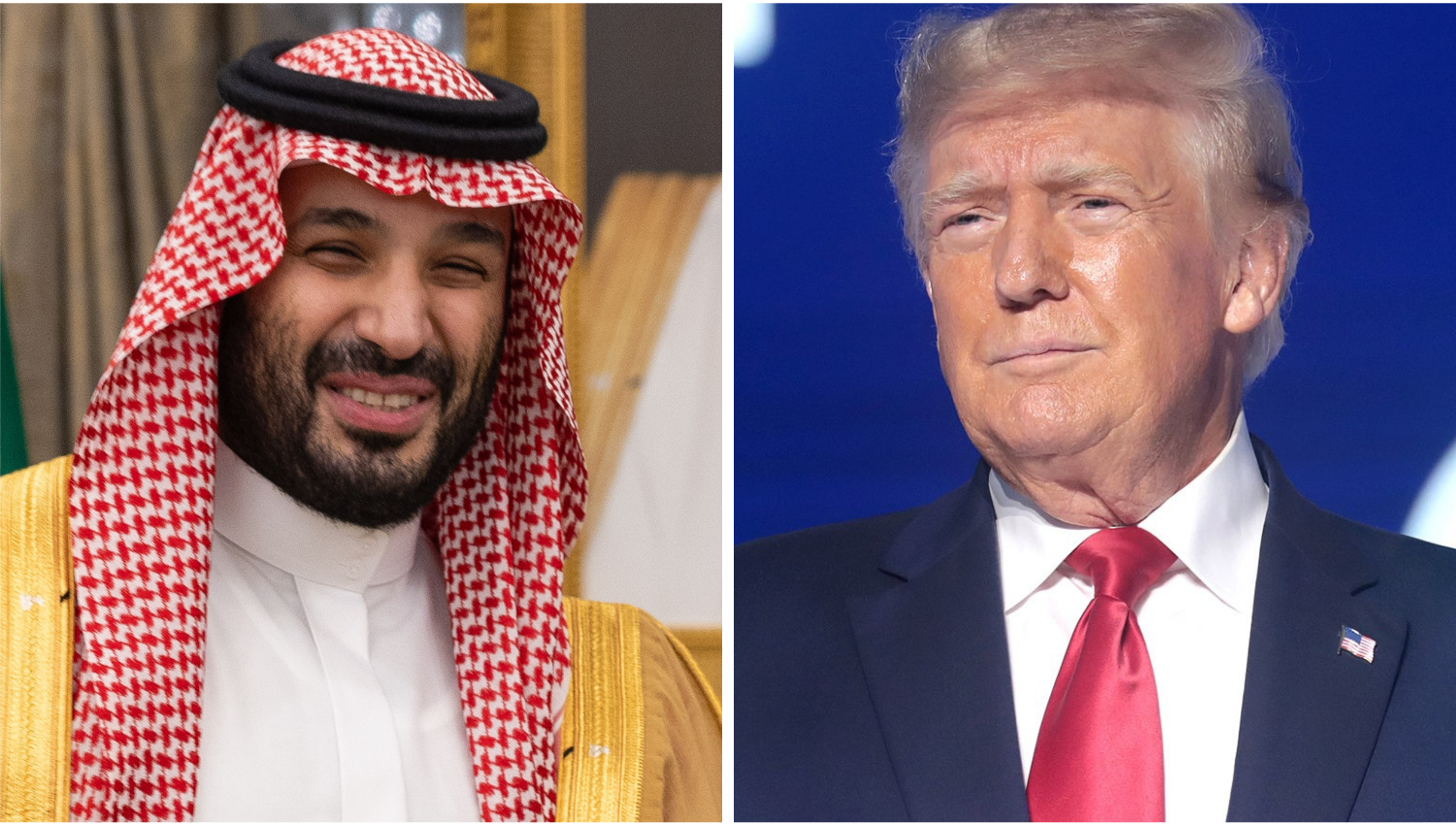
Bargaining Chips: The Gilded Tech Triangle of Riyadh, Silicon Valley and Mar-a-Lago

In
Donald Trump is visibly in his element when surrounded by gilded palaces, ornate fountains, and absolute monarchs. His bond with the Gulf States—particularly Saudi Arabia—goes beyond mere aesthetic affinity or blatant corruption.
*****
Bargaining Chips: The Gilded Tech Triangle of Riyadh, Silicon Valley and Mar-a-Lago
Donald Trump is visibly in his element when surrounded by gilded palaces, ornate fountains, and absolute monarchs. His bond with the Gulf States—particularly Saudi Arabia—goes beyond mere aesthetic affinity or blatant corruption. It’s a strategic partnership, rooted in shared interests, ideological alignment, and ruthless opportunism.
The love is mutual. Crown Prince Mohammed bin Salman doesn’t see Trump as a pesky preacher of human rights or international norms, but as a savvy businessman – willing to trade American technology, influence, and recognition for investments, cheap oil, and geopolitical support. During Trump’s first term, this culminated in the Abraham Accords, which positioned the Middle East as a linchpin of his foreign policy.
But the region also plays a pivotal role on the domestic front. Trumponomics centres on reorienting the U.S. economy toward production and exports. According to Trump, this requires two things: cheap energy and massive investments. That combination is increasingly hard to sustain—especially now that IRA- and CHIPS-related investments in green and semiconductor industries have been scaled back, and the dollar has weakened since Liberation Day. Ironically, the low energy prices Trump seeks —secured through Gulf oil— are putting pressure on the very U.S. fracking sector he champions. A sector that, paradoxically, boomed under shale-critical Obama and Biden, but now struggles under Trump due to market instability, rising interest rates, and prices too low to remain profitable.
Still, Trump keeps the Gulf close. Unlike Biden —who called Riyadh a “pariah”— Trump sees Saudi Arabia as a vital ally. Not only as an oil producer, but as a financier. Mohammed bin Salman wants to diversify his economy and needs advanced technology to realise his Vision 2030 plans. In exchange for billions in investments and gifts, Trump offers access to the crown jewel of the U.S. economy: the AI ecosystem.
This is the context in which OpenAI CEO Sam Altman, amongst an army of tech executives, joined a trip to the Gulf. While Biden attempted through the AI Diffusion Framework, to restrict U.S. semiconductor tech from ending up in foreign data centres in less friendly regions—including the Middle East—Trump embraces a purely transactional approach: those who pay, gain access – as long as they do not use the latest Huawei chips. The Middle East smells an opportunity. Saudi Arabia, already wielding influence in ARM—the UK’s world leader in processor architecture—through the SoftBank Vision Fund, now seeks deeper entry into the beating heart of the American tech sector. Furthermore, the Emirati investment fund MGX, which is controlled by the government of Abu Dhabi, will be an instrumental role in funding Trump’s USD 500 billion Stargate. In the margins of Trump’s visit Nvidia announced that it will supply 18,000 of its latest AI chips to Saudi Arabia’s Humain.
This high-tech bartering is emblematic of how technology is increasingly used as geopolitical currency. In a world where AI represents not just economic value but geostrategic power, control over data, software, and chips is the new oil. Trump trades on that—exchanging new tech for old oil. Not by reinforcing alliances with democracies, setting standards, or safeguarding ecosystems—but by striking deals. Those who bring billions to Mar-a-Lago walk away with Silicon Valley.
Whether this is sustainable in the long run is questionable. But it illustrates how under Trump, and with it U.S. tech supremacy, has become negotiable. In the meantime, the Middle East is emerging as a serious player in a multidimensional geopolitical poker game, where fossil fuels, big capital, and semiconductors dominate the game.
(Photo credit: Wikimedia Commons)